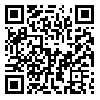Volume 7, Issue 2 (Apr- June 2018)
JCHR 2018, 7(2): 119-126 |
Back to browse issues page
Mohammad Shahradian1 
 , Seyedeh Mahdiah Namayandeh *
, Seyedeh Mahdiah Namayandeh * 
 2, Masudah Mojahed3
2, Masudah Mojahed3 
 , Mohammad Ali Moravati Sharifabad4
, Mohammad Ali Moravati Sharifabad4 
 , Vahid Barzegarpour5
, Vahid Barzegarpour5 


 , Seyedeh Mahdiah Namayandeh *
, Seyedeh Mahdiah Namayandeh * 
 2, Masudah Mojahed3
2, Masudah Mojahed3 
 , Mohammad Ali Moravati Sharifabad4
, Mohammad Ali Moravati Sharifabad4 
 , Vahid Barzegarpour5
, Vahid Barzegarpour5 

1- Department of Ageing Health, School of Public Health, Shahid Sadoughi University of Medical Sciences, Yazd, Iran
2- Research Center of Prevention and Epidemiology of Non-Communicable Disease, Department of Statistics and Epidemiology, School of Public Health, Shahid Sadoughi University of Medical Sciences, Yazd, Iran , drnamayandeh@Gmail.com
3- Department of infectious diseases, School of Medicine, Shahid Sadoughi University of Medical Sciences, Yazd, Iran
4- Elderly Health Research Center, School of Public Health, Shahid Sadoughi University of Medical Sciences, Yazd, Iran
5- Department of Health Education, School of Public Health, Shahid Sadoughi University of Medical Sciences, Yazd, Iran
2- Research Center of Prevention and Epidemiology of Non-Communicable Disease, Department of Statistics and Epidemiology, School of Public Health, Shahid Sadoughi University of Medical Sciences, Yazd, Iran , drnamayandeh@Gmail.com
3- Department of infectious diseases, School of Medicine, Shahid Sadoughi University of Medical Sciences, Yazd, Iran
4- Elderly Health Research Center, School of Public Health, Shahid Sadoughi University of Medical Sciences, Yazd, Iran
5- Department of Health Education, School of Public Health, Shahid Sadoughi University of Medical Sciences, Yazd, Iran
Abstract: (4936 Views)
Introduction: The nature of life course, with aging, triggers changes in the respiratory and immune system of the elderly, which increases the susceptibility to Tubercle Bacilli (TB) in the elderly. Clinical characteristics and the natural course of TB in older adults are different. This study aimed to compare the epidemiological and clinical features of pulmonary TB in elderly and non-elderly patients over 16 years old in Yazd city in a five-year period.
Methods: Within this historical cohort study, recorded of patient's data, including age, gender, clinical symptoms of the disease, history of treatment, drug resistance, and treatment results examined during 2012-2016.
Results: From 177 patients with pulmonary TB, who admitted to this study, 107 were 65 years and older (60.5%), and 70 were aged 16-64 (39.5%). Elderly experienced fever significantly fewer (p = 0.02), nonetheless they are more complaining about dyspnea (p = 0.01) and anorexia (p = 0.04) than non-elderly people. The incidence of drug complications was significantly higher among the elderly. Drug side effects, especially dermal itching (p = 0.001), are higher for older people. The number of drug resistance associated with larger mortality and recurrence in the elderly, which is not significant. Mantel-Haenszel evaluation showed that irrespective of drug resistance, the elderly died more than non-elderly (OR = 1.37 ± 0.88) (p = 0.85).
Conclusion: Clinical symptoms, diagnostic criteria and treatment outcome and complications of TB in the elderly are significantly different from others. Elderly people are considerably more likely to anorexia than non-elderly. Fever is not common among elderly people. The incidence of drug complications was significantly higher among the elderly. Considering these differences will help us to diagnose and treat them more effectively.
Methods: Within this historical cohort study, recorded of patient's data, including age, gender, clinical symptoms of the disease, history of treatment, drug resistance, and treatment results examined during 2012-2016.
Results: From 177 patients with pulmonary TB, who admitted to this study, 107 were 65 years and older (60.5%), and 70 were aged 16-64 (39.5%). Elderly experienced fever significantly fewer (p = 0.02), nonetheless they are more complaining about dyspnea (p = 0.01) and anorexia (p = 0.04) than non-elderly people. The incidence of drug complications was significantly higher among the elderly. Drug side effects, especially dermal itching (p = 0.001), are higher for older people. The number of drug resistance associated with larger mortality and recurrence in the elderly, which is not significant. Mantel-Haenszel evaluation showed that irrespective of drug resistance, the elderly died more than non-elderly (OR = 1.37 ± 0.88) (p = 0.85).
Conclusion: Clinical symptoms, diagnostic criteria and treatment outcome and complications of TB in the elderly are significantly different from others. Elderly people are considerably more likely to anorexia than non-elderly. Fever is not common among elderly people. The incidence of drug complications was significantly higher among the elderly. Considering these differences will help us to diagnose and treat them more effectively.
Review: Research |
Subject:
Public Health
Received: 2018/04/16 | Accepted: 2018/05/7 | Published: 2018/06/27
Received: 2018/04/16 | Accepted: 2018/05/7 | Published: 2018/06/27
| Rights and permissions | |
 |
This work is licensed under a Creative Commons Attribution 4.0 International License. |
